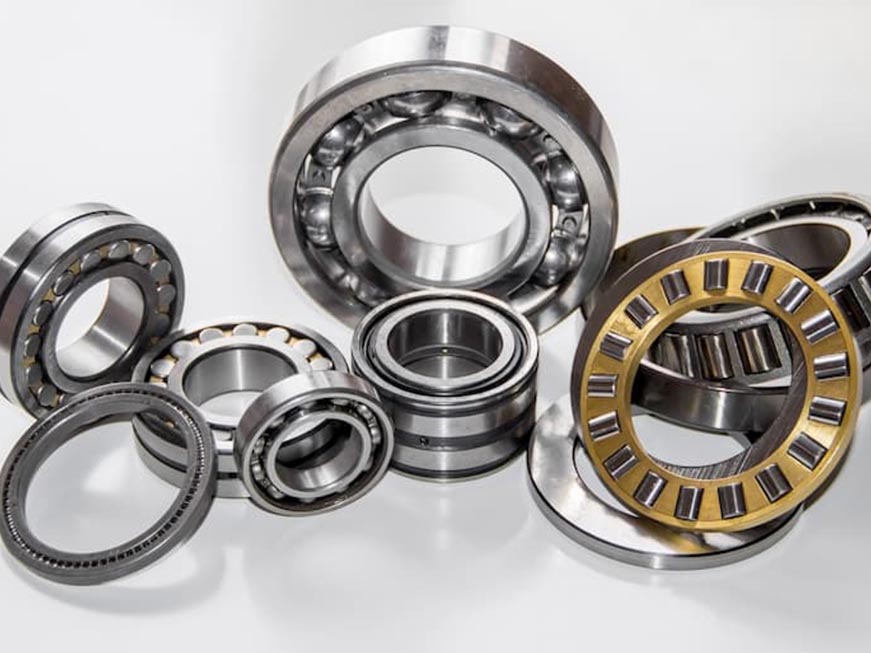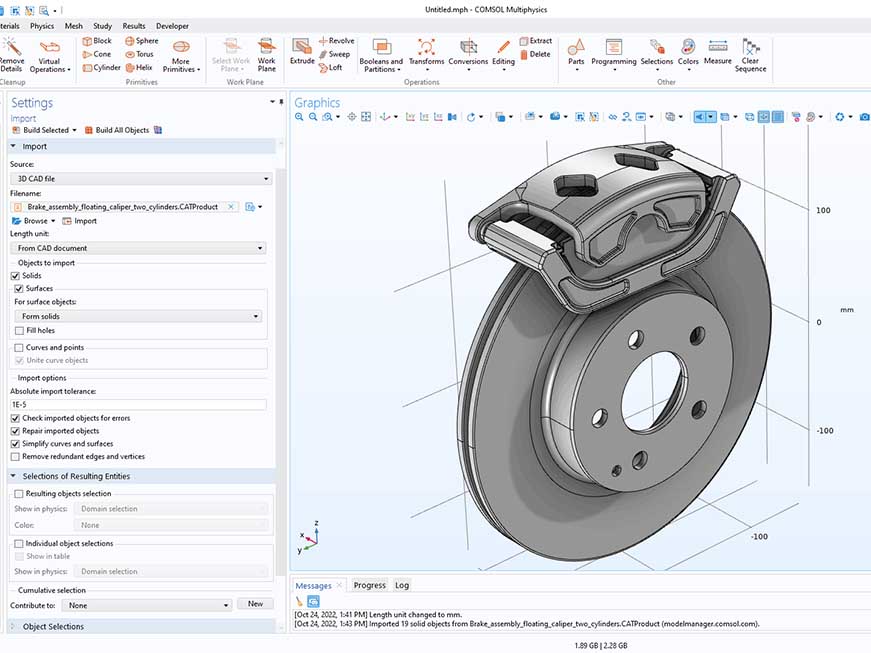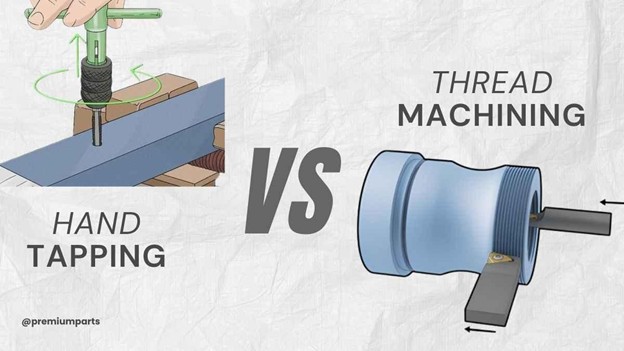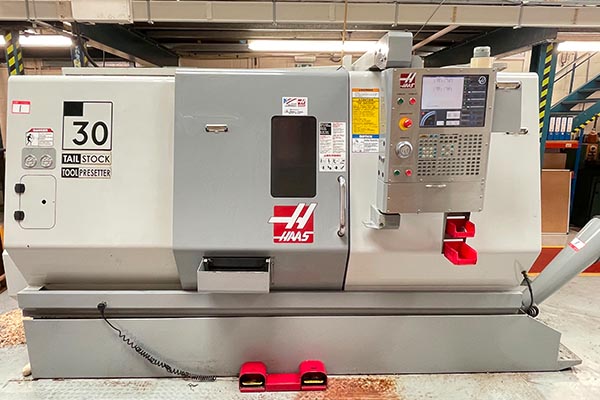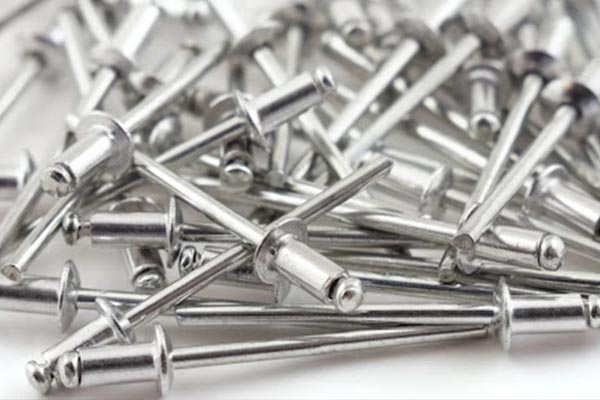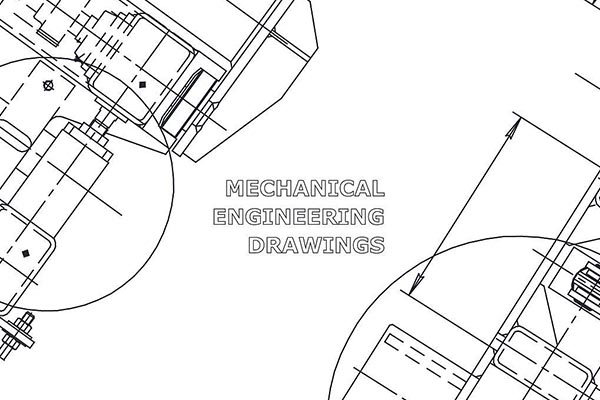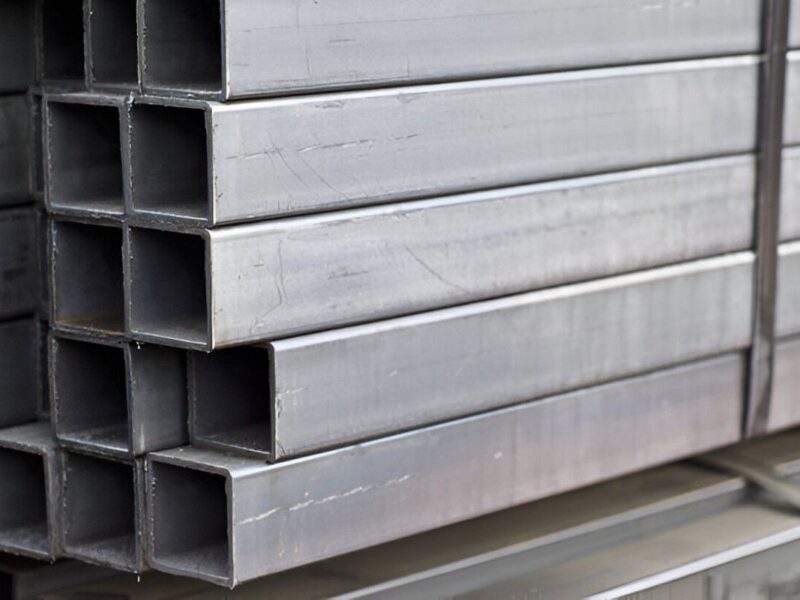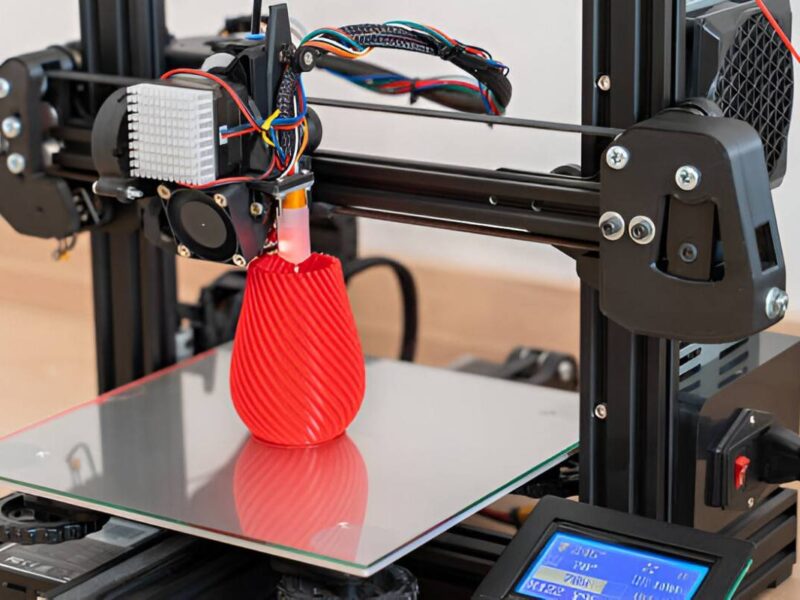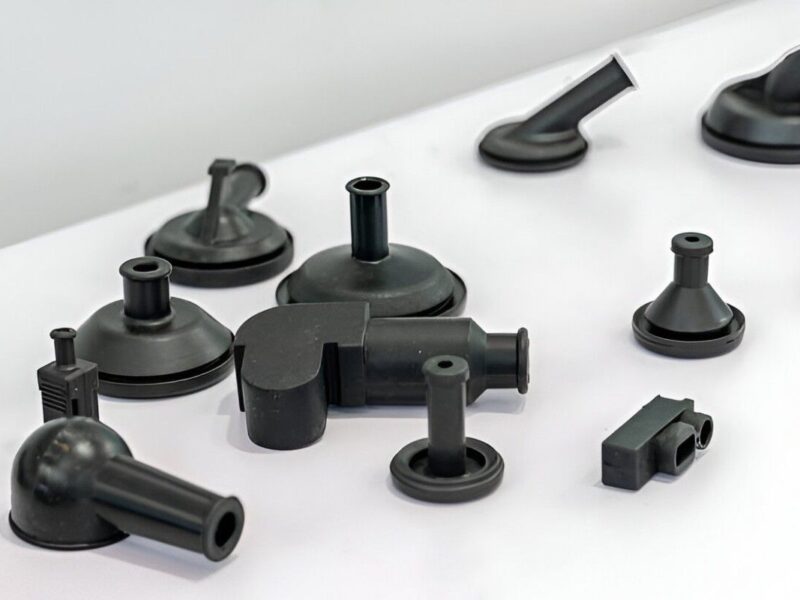Medical implants and the everyday use of miniature parts inside our gadgets are dictating that the world is shrinking and becoming more precise. Because new advances are making products smaller but more advanced. Businesses now have to be especially accurate on a tiny scale.
By using Micro CNC Machining, you can produce tiny parts that are formed with the tightest tolerances. It supports the progress of sectors where minor changes, even a micron, can make significant differences.
At Premium Parts, we know how to overcome these challenges. Because of our experience in high-precision machining, our customers turn to us to make their smallest designs into high-performing products. We must first emphasize understanding what Micro CNC Machining means and its significance before analyzing the process.
What is Micro CNC Machining?
Micro CNC Machining involves producing parts at a very small scale with the help of CNC technology. Tests are done on tiny parts, smaller than a hair. Traditional CNC machines can’t handle these ultra-small components.
It’s not simply a scaled-down version of regular machining. To accomplish Micro CNC, you need fine tools, special tactics, and high precision. At this level, surface finishes and burrs make a difference. You must control tool wear and thermal expansion carefully.
As mentioned earlier, creating very complex, high-quality, tiny parts requires the use of micro CNC machining. These petite components are used in major fields. For example, in medical devices, the aerospace sector, electronics, and other areas. This method can drill very small holes under 0.1mm. It can also mill thin-walled pockets with high precision.
How Does Micro Precision Machining Work?
The core idea behind micro machining resembles traditional CNC machining. Computer instructions tell the tool where to cut. Nevertheless, microscale work requires special attention and more effort from the researchers.
Miniaturized Tooling
Many micro CNC tools are smaller than 1 mm in size. They must spin at such high RPMs as 60,000 or higher to keep up the necessary material removal and low quality. Due to compact design requirements, even minor errors in machining can affect the reliability of parts.
Ultra-Precise Machines
Improved stiffness, damping, and precise positioning are built into micro CNC machines. To make everything run as needed, linear motors, air bearings, and high-precision encoders are commonly used.
Advanced CAD/CAM Integration
The micro milling machine CNC features require optimum toolpath strategies. The software helps maximize engagement with small tools, apply minimal force, and handle heat generation successfully. If the program runs incorrectly, the machine might vibrate, create mistakes, or produce parts that are not the correct size. The mentioned problems are not acceptable for micron technologies.
Material Behavior at Small Scales
Since the behavior of various materials changes when cut very thin or under low pressure. People doing micro-machining must know how metals and plastics react to small forces. Each cut makes a big difference.
Key Capabilities & Tolerances
Thanks to its precision, Micro CNC Machining is prized, not just for working on small objects. In cases where accuracy down to a micron is needed, micro-machining proves to be the best approach.
At Premium Parts, we can help you bring tight tolerances of ±1 micron or better, depending on your design requirements. By merging high-speed spindles, strong machine systems, and smooth toolpaths, such work is achievable.
What Can Be Achieved Through Micro CNC Machining?
- Micro-holes and slots: Down to 0.05 mm in diameter
- Ultra-thin walls: Often thinner than 0.1 mm, depending on material strength
- High aspect ratios: Deep, narrow features with consistent profiles
- Exceptional surface finishes: Achieving Ra values as low as 0.1 µm
- Tight concentricity and positional accuracy: Critical for optical and fluidic components
Thanks to these capabilities, manufacturers can achieve more in their designs, use less space for components, and build more effective, smaller systems. In any production, micro CNC helps you design smarter and build with confidence.
Applications of Micro CNC Machining
Accuracy, demand for miniature parts, and high performance are some of the reasons why many modern industries use micro CNC machining. Let’s take a look at how industries are relying on this innovative process.
Medical & Healthcare
- Miniature implants and instruments used in orthopedics and dentistry require very close attention to eliminate potential risks to the human body.
- Due to the nature of endoscopic surgery, such devices should be very small, sterile, and with a smooth finish, which makes them suitable for micro-machining.
- Diagnostic analysis and testing become more accurate in lab-on-chip systems because small channels and valves are produced to very precise levels.
Aerospace & Defense
- Airplanes and spaceships depend on small instruments and devices that must function reliably in severe environments.
- Both connector pins and housings are precisely and accurately made with this technology.
Electronics & Telecommunications
- Smartphone parts and connecting components are made using tiny and precise technology.
- So that signals are accurate at high frequencies, the shape and surface finish must be precisely controlled.
Automotive & Robotics
- Since robots and cars are becoming more advanced and minimalist. Therefore, using miniature and precise mechanical parts has become more common.
- To guarantee precise control and feedback, lidar housings, actuators, and sensor mounts in autonomous systems are produced to very fine tolerances.
Improved products, more efficient space usage, and better system integration always play a vital role in any industry. Premium Parts supplies components that suit the needs of various sectors in terms of quality, delivery, and cost.
Common Materials Used in Micro CNC Machining
The material choice in micro-machining. Some types of materials are good for precise cutting, but others can create burrs or change their shape under heat. Getting the best results from any material usually demands experience and an effective setup.
Here are the most common raw materials used for micro CNC machinery:
Metals
- The medical and aerospace sectors use stainless steel mostly because it is strong, resists corrosion, and is compatible with the human body.
- Titanium is highly strong and is used for many critical applications, like replacing joints and electronics.
- Aluminum is light and easier to work with; it is popular for micro housings, brackets, and enclosures.
- Brass and copper are good for parts that need good electrical conductivity and precise work.
Plastics
- PEEK stands out as a strong thermoplastic. It can resist chemicals and maintain its size very well.
- Delrin (POM) is widely used in gears, bushings, and moving parts where friction needs to be lowered.
- Many medical devices for transparent parts or fluid channels are made with PMMA (Acrylic).
Others
- Ceramics are applied in areas like electronics and medicine, where they need to be tough against wear or high in insulation against heat.
- Alloys & Specialty Materials: These include Inconel, NiTi, and more, chosen for specific performance characteristics under extreme conditions.
Micro Precision Machining vs. Other Microfabrication Techniques
Micro CNC machining helps create very small parts. Its flexibility with materials and 3D shapes makes it useful in many industries.
Let’s see how Micro CNC measures up against other regular microfabrication techniques.
| Technique | Best For | Limitations |
| Micro CNC Machining | Functional, complex 3D parts in metal or plastic | Slower for high-volume production of ultra-simple geometries |
| Photochemical Etching | Very thin, flat metal parts with 2D profiles | Not suitable for 3D or thicker parts |
| Laser Micromachining | Fine features, engraving, micro holes | Can leave heat-affected zones; limited by material type |
| EDM (Wire/Sinker) | Hard metals, complex internal geometries | Slower cycle time; more expensive setup for micro features |
Using CNC Micro Machining, it is possible to produce small-sized components with 3D shape, great structure, repeatable measurements, and across a wide range of available materials. For many, it is chosen first when precision and strong parts are key for a job.
Challenges in Micro CNC Machining (and How to Solve Them)
The engineering challenges in micro work don’t happen in regular machining. However, if the right technology and knowledge are used, these barriers can be handled well.
1. Tool Breakage
Micro tools are fragile and more susceptible to breakage. Even slight misfeeds or vibrations can cause failure. The possible way to avoid such an issue is to use tools as lightly as possible, work with machines built for toughness, and optimized toolpaths to minimize tool stress.
2. Chip Evacuation
The small chips found during machining and tools may still disrupt the tool’s path and cause surface concerns. A way to solve this is to use air and coolant to blow away the chips and apply special coatings to the cutting tools.
3. Heat Generation
If the heat gets too extreme, it can cause both the material and the tool to become damaged. We address this problem by exacting spindle speeds, feed rates, and making sure we have micro-coolant systems.
4. Workpiece Fixturing
Clamping thin parts presents certain challenges. Our team uses vacuum chucks, special micro-vises, and jaws that fit delicate setups for this work.
Premium Part’s Professionals have expertise that allows us to deal with these issues. We’ve equipped ourselves with proper technology and methods to handle every component, big or small.
Quality Control & Inspection in Micro CNC Machining
Measurements made in microns are not possible with Conventional machining. Aside from this, CNC micro machining encompasses a unique and stringent approach to quality control.
Inspection Techniques We Use:
- Coordinate Measuring Machines (CMMs): For verifying dimensions down to 1 µm
- Optical Microscopes and Cameras: To inspect micro features and surface conditions
- Laser Measurement Systems: For non-contact and high-speed profiling
- Surface Profilometers: To measure surface roughness accurately
Why It Matters
Even the most precise parts need checking to meet the designs. Small burrs, misalignments or any damage on the surface may make a part unusable. It is especially true for the medical, aerospace, or electronic industries.
Choosing the Right Partner for Micro CNC Machining
Micro-scale production needs different technology, skills, and expertise than standard CNC machining. Not all machining services have the right setup for this type of work.
Here are some frequent considerations when choosing a partner for Micro CNC machining.
- Proven experience with micro features
- Specialized equipment and micro tooling
- Strong quality control infrastructure
- Responsive engineering support
- Flexibility with materials and order volumes
What the Future Holds For Micro CNC Machining
In all high-tech fields, the need for small(tiny) components and well-integrated systems is increasing. For example, the modern products, such as wearables, autonomous systems, and medical implants, are getting more critical.
The AI integration, automatic toolpath optimization, process monitoring, and quality control are becoming increasingly advanced day by day. At Premium Parts, we’re ensuring that we remain up-to-date by investing in new equipment and training our staff to handle modern-day problems with machining and offer a complete solution for your project.
Final Thoughts
To sum up, Micro CNC is becoming indispensable across many industries. Some very precise parts that drive the performance of leading industries could not exist without this engineering approach. But precision alone isn’t enough. A good miniaturized manufacturing partner must be able to process ideas and handle the finer points of the process.
Premium Parts is here to help you bring your vision to scale, accurately, efficiently, and confidently.


